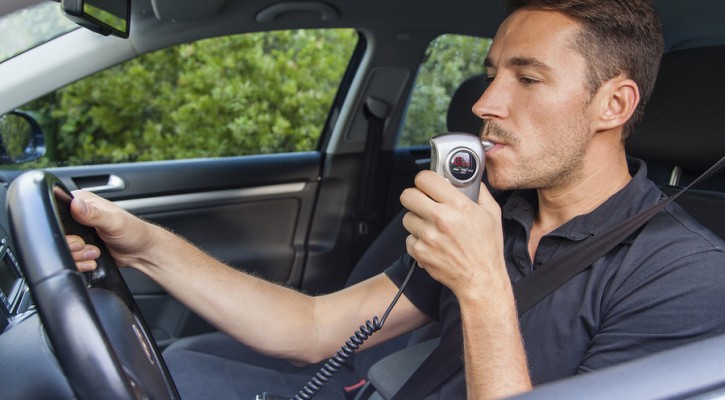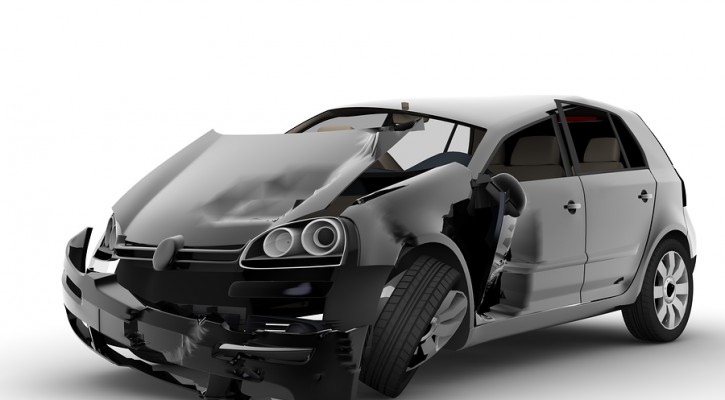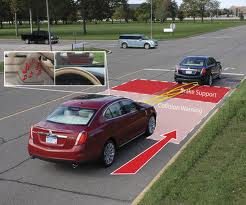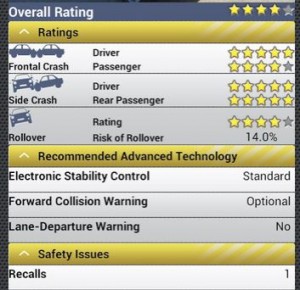Category Archive: Safe Driving

Do As I Say, Not As I Do Driving Culture In US
February 10, 2015
Do as I say, not as I do, seems to be the driving force among US drivers according to the AAA Foundation for Traffic Safety’s Traffic Safety Culture Index released this week. The survey of 2,705 US licensed drivers age 16 and older shows that most believe that certain driver behaviors are dangerous and a threat to other drivers but a large number admit to engaging in those same risky behaviors themselves.
Car crashes affect most Americans in one way or another. Among the survey’s respondents:
- One in ten have been seriously injured in a crash and almost one in five have been involved in a serious crash.
- Almost one in three had a friend or relative that was seriously injured or killed in a crash.
When asked about certain traffic issues, survey respondents who felt they were a somewhat or bigger problem than three years ago were as follows:
- Aggressive driving – 61.3%
- Distracted driving – 85%
- Drunk and drugged driving – 41.6 and 45.6 respectively
The do as I say, not as I do factor
When it comes to their personal driving behavior the survey showed:
- 54.7% said red light running was a serious threat and 72.7% said it is completely unacceptable. However, more than one-third (35.6%) admitted to running a red light within the past 30 days.
- 45.2% of drivers felt that speeding at or above 10 mph over the posted speed limit in residential zones was a serious threat and 84.4% said it is completely unacceptable. However, almost half (43.5%) admitted that they done it within the past 30 days.
- 78.6% of drivers felt that texting was a serious threat and 64.6% said it is completely unacceptable. However, more than one-third (36.1%) had read a text or email and more than one-quarter (27.1%) had typed one while driving within the past 30 days.
- 45% of drivers felt that drowsy driving was a serious threat and 81.3% said it is completely unacceptable. However, almost one-third (29.4%) had done so within the past 30 days.
Cell phone use while driving
Many Americans still don’t realize that, when it comes to cell phone use, the distraction doesn’t come from holding a phone to your ear but from the phone conversation itself. Among survey respondents:
- 65.7% of drivers felt that use of hand-held cell phones is unacceptable while almost the same amount (65.4%) felt that use of hands-free cell phones is acceptable.
- 46.4% of drivers felt who use speech based in-vehicle cell phone systems don’t believe that the calls are at all distracting.
- 89.3% believe that texting while driving should be banned.
- 67.8% support a ban on hand-held cell phones.
- 40.2% support a total ban on both hand-held and hands-free cell phone use.
For more information on the survey, read: 2014 Traffic Safety Culture Index

Drunk/Drugged Driving: Good News And Bad News
February 9, 2015
There’s good news and bad news from a study released recently by the National Highway Transportation Safety Administration (NHTSA). The good news is that drunk driving is down significantly but drugged driving is on the rise.
The National Roadside Survey, a survey conducted five times over the last 40 years, shows that drunk driving is down significantly since the last survey in 2007. The National Roadside Survey is a voluntary roadside survey conducted at points throughout the nation. Drivers are notified by signs leading to the survey site that the survey is completely voluntary and the results will remain anonymous.
According to the NHTSA survey, approximately eight percent of drivers during weekend night time hours were found to have alcohol in their system. Just over one percent of the drivers blew a .08 on the breathalyzer, the level at which drivers are deemed legally drunk in all 50 states. The number of drunk drivers in the survey was down by 30 percent since the last survey conducted in 2007 and 80 percent since the first survey conducted in 1973.
That good news was tempered by the fact that the number of drivers with drugs in their system that could affect their driving increased by almost 23 percent. The number of drivers with marijuana in their system increased by 50 percent.
The survey found that more than 15 percent of drivers in the survey tested positive for illegal drugs, a 25 percent increase over the previous survey. However, drugs that can affect driving aren’t just illegal drugs. Many drivers fail to realize that a number of prescription and over-the-counter medications can affect a person’s ability to drive safely. Overall, about 20 percent of drivers tested positive for some type of drug that could affect their driving abilities, up from 16.3 percent in 2007.
NHTSA credited anti-drunk driving campaigns with the lower rate of drunk driving. It seems that new campaigns are in order to reduce the number of drugged drivers on the road.
Read more: NHTSA Releases Two New Studies on Impaired Driving on U.S. Roads

Nine Car Models Have Zero Deaths
February 3, 2015
A study, released last week by the Insurance Institute for Highway Safety (IIHS), looked at the death rate for 2011 model year vehicles sold in the US and the data showed a record nine models with zero deaths.
According to the authors, the chances of dying in a vehicle crash have fallen by more than one-third over the past three years. Significant improvements in design safety, including; structural improvements, additional safety features, and “an evolving mix of vehicle types” contributed to the decline in the risk of death. The authors estimated that, had vehicle designs remained the same since 1985, an additional 7,700 people would have died.
Vehicle structural improvements and safety features have improved tremendously over the past few years. The 2011 models sold through the 2012 calendar year had an overall rate of 28 vehicle deaths per million registered vehicles compared to 48 deaths per million registered 2008 vehicles sold through 2009. According to the IIHS, eight years ago there were no vehicles with a zero death rate and now there are nine.
The surprising thing about the vehicles that had zero deaths were that two-thirds of them were SUVs. This is surprising because SUVs had some of the highest death rates ten years ago due to the fact that their high center of gravity made them prone to roll over in a crash. When they did roll over, their weak roofs generally gave way, crushing the vehicle occupants. Structural changes and the addition of electronic stability control (ESC) led to lower death rates, not only in SUVs but throughout the vehicle fleet. According to the authors, the 2011 rollover death rate of 5 per million registered vehicle years is less than one-quarter of that for the 2004 model year. A registered vehicle year is one vehicle registered for one year.
The nine vehicles with zero death rates are:
|
Audi A4 4WD |
luxury car |
midsize |
|
Honda Odyssey |
minivan |
very large |
|
Kia Sorento 2WD |
SUV |
midsize |
|
Lexus RX 350 4WD |
luxury SUV |
midsize |
|
Mercedes-Benz GL-Class 4WD |
luxury SUV |
large |
|
Subaru Legacy 4WD |
4-door car |
midsize |
|
Toyota Highlander hybrid 4WD |
SUV |
midsize |
|
Toyota Sequoia 4WD |
SUV |
large |
|
Volvo XC90 4WD |
luxury SUV |
midsize |
Smaller vehicles, especially the “minis” or “smart cars” fared poorly in the study. The car with the highest death rate was the Kia Rio, a minicar, with 149 driver deaths per million registered vehicle years. The Rio, along with the Nissan Versa sedan, and the Hyundai Accent, were the only three cars with more than 100 deaths per per million registered vehicle years. In small and mini cars, there isn’t enough vehicle structure to cushion and prevent intrusion into the vehicle occupant space.
To see how your 2011 model fared in the study: visit: Driver death rates by make and model

Automatic Braking On NHTSA Wish List
February 2, 2015
Automatic braking systems are being recommended by the National Highway Transportation Safety Administration (NHTSA) for new cars under its New Car Assessment Program. The announcement of this recommendation was made by U.S. Transportation Secretary Anthony Foxx on January 22.
NHTSA is recommending two different types of automatic braking systems that go beyond crash avoidance systems, currently available in some car models, that only warn the driver of an imminent crash. The systems that NHTSA recommends including in all new cars are known as Crash Imminent Braking (CIB) and Dynamic Brake Support (DBS).
If the driver has not already applied the brakes the CIB system automatically applies the brakes if the vehicle detects that a crash is imminent. The DBS system takes over and applies more braking force if it detects that the driver is not applying enough force to stop in time.
According to Foxx’s announcement, approximately one-third of collisions in 2013 were rear-end collisions with another vehicle. The evidence showed that many drivers in those crashes either didn’t apply the brakes at all or didn’t apply enough braking force to avoid the crash. It’s hoped that these two braking systems can help avoid those crashes.
The automatic braking systems being recommended by NHTSA aren’t new technology, they already exist in some higher end model vehicles. In 2013, the Insurance Institute for Highway Safety (IIHS) added automatic braking systems to the requirements for a vehicle to earn the designation as a “Top Safety Pick +” in its annual list of safest cars. Auto manufacturers are adding them to more and more vehicles in order to earn the top safety plus designation. IIHS announced that, for the 2015 model year, a record 33 vehicle models won the top safety pick plus designation.
It’s unclear, as of now, if the NHTSA recommendations will become mandatory for new vehicles in the near future.


